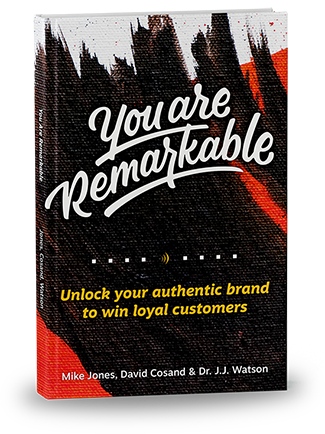 Batman perches on a skyscraper. Superman zips through the sky. These are the characters emblazoned in our minds when we think about heroes.
Batman perches on a skyscraper. Superman zips through the sky. These are the characters emblazoned in our minds when we think about heroes.
Why do heroes hold lake-view real estate in our mental landscape? Because where there’s a hero there’s a story. And the human brain is pretty much addicted to stories.
Did you know that every business is telling a story? It might be one dude cleaning windows or IBM, but whether they realize it or not, they’re telling a story.
- Apple is telling a story about people who “Think Different.”
- Telescrypts, a local tech startup, is telling a story about improving healthcare in developing countries “so we can all have access to healthcare.”
- Resound is telling a story about how every company is remarkable in their own unique way.
The Customer is the Hero
As companies begin to define their story there is one common mistake:
They position their brand as the hero.
We hear it every single day on tv and radio and billboards. Messages like “Call the best, flush the rest,” from local plumbers, or “A Spotless Reputation,” from the window washers, or even “We can create an environment that’s beyond your imagination,” from an interior designer. All these phrases have one thing in common: the brand is the main character.
In a recent Building a Story Brand podcast, Donald Miller says that all humans wake up every morning as the main character of their own story. In their minds, they are the hero.
Think about that for a second. When you wake up in the morning, the curtain pulls back and you are the main character. In your mind, the rest of the day unfolds like a movie, with the camera following you around. You experience challenges and problems, and when you overcome them you feel like William Wallace.
Now imagine everyone else experiencing the same thing. What does that mean for companies trying to tell their story? The brand cannot be the hero.
The customer is the hero.
When the brand positions itself as the hero, they are actually in competition with their customer. Companies should be serving their customers, not competing with them.
The Brand is the Guide
Frodo has Gandalf. Batman has Alfred. Mulan has Mushu (gotta make my Disney-loving coworkers happy). All great heroes need a guide. They need someone to show them the way.
The guide’s role is to give the hero a course of action. After discovering Frodo does indeed hold the the One Ring, Gandalf sends Frodo to deliver it to Rivendell, and ultimately on a journey to Mount Doom in Mordor. He is there for support, but he always keeps the spotlight on Frodo.
Brands need to do the same. Customers already see you as the guide, you might as well be one. Take on your customer’s worldview.
How?
For the sake of keeping this post short, I will give two practical suggestions on how to transform messaging from brand-centric to customer-centric.
1. Customer Journey Mapping
To position your brand as the guide, you need to understand your customers. Figure out what their problems are and how you can guide them to a happy outcome.
So ask yourself:
- What problems are my customers facing?
- What goals do my customers have?
- What is my plan to help them reach their goals?
When you define problems and goals, look past the simple answer. If you’re a window washer, the simple problem your customers have is (surprise!) dirty windows. The deeper problem could be something like “I don’t have time to clean the windows, but having them dirty and smudged really stresses me out.”
See where I’m going? Start there, and you’ll get the ball rolling.
2. Messaging Audit
When you have a good idea what goals and problems your customers have, do a simple audit on all your current message. Take a look at your website, brochures, tagline/slogan, blog posts, and any other marketing collateral and ask yourself: “Who is the hero in this message?”
Anytime your brand is the answer, change it. Pretty simple, huh?
Happily Ever After
Words matter. In business, words matter a lot because money is hanging in the balance. Brands need to position themselves as the guide and their customer as the hero. Messaging will resonate deeper and they’ll win more sales.
I know it’s difficult to analyze your current messaging when you’re so close to the subject matter, but I promise, it’s worth it.
If you happen to need help, Resound would love to be your guide! Call or email and let’s talk about what that could look like for you.




